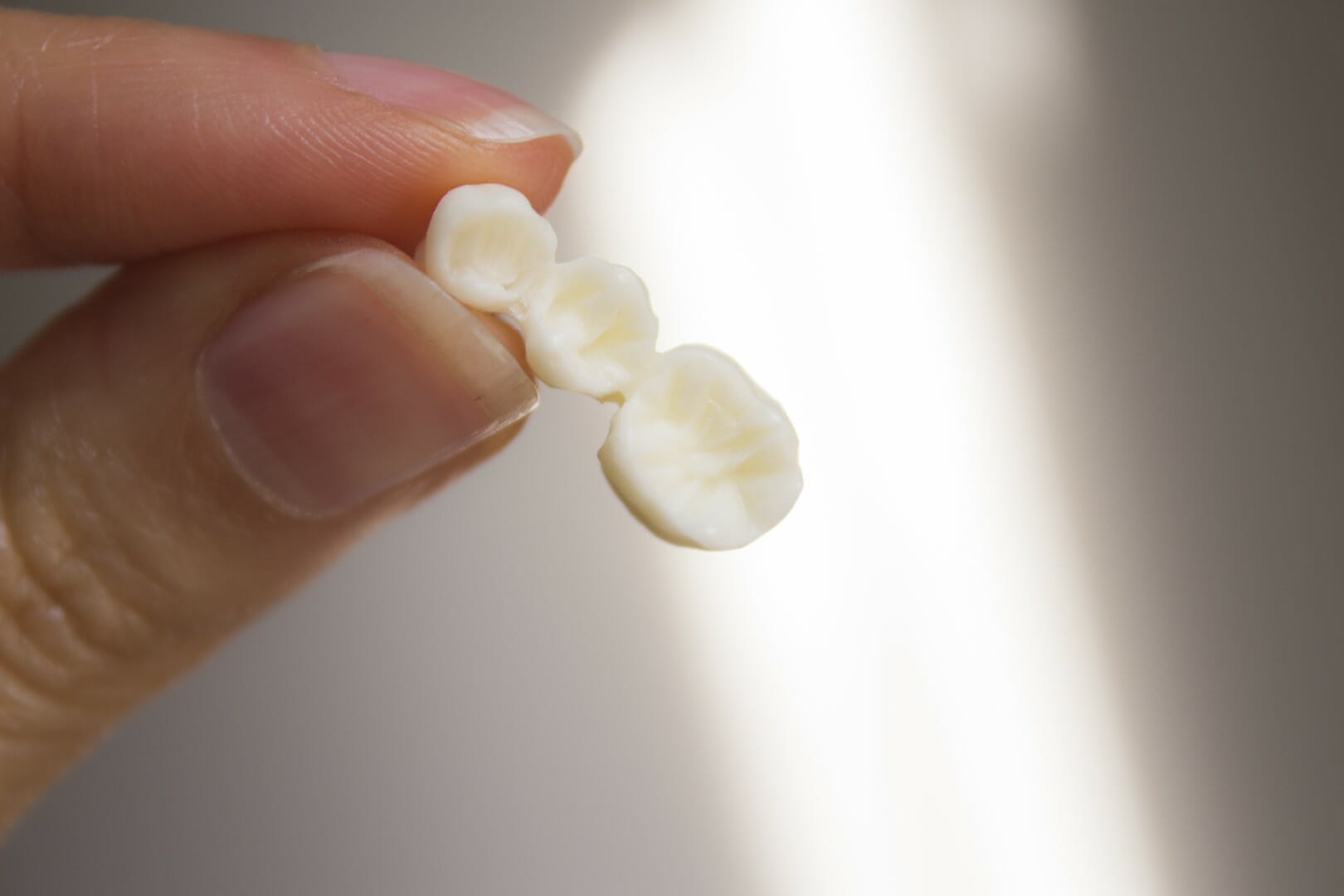
A bridge replaces one or more missing teeth with similar materials and processes which are used in crowns. An artificial tooth is anchored by adjacent teeth to fill a gap or a space left by missing teeth. Dental bridges are less common these days, due to the advent of dental implants (see link), however they’re still a considered treatment option in some situations, and where there is more than one tooth missing.
A dental crown is made to look and feel like a real tooth and is generally made with a material which feels like a normal tooth, such as porcelain, ceramic, or even gold. The term ‘crown’ was coined as the device is like a cap (crown) which sits over a damaged tooth to give the appearance of a regular tooth sitting comfortably on the gum line, and is similar in strength and shape to the rest of the teeth.
Why Do I Need A Dental Bridge?
There are many reasons why you may need a dental bridge. If you have gaps of more than one missing tooth, the remaining teeth move and slot into the missing gaps which can cause pain, disease and an uncomfortable bite. A bridge is created to fill these gaps and keep the original teeth in place.
There are several reasons why a dentist may recommend a dental bridge:-
- If adjacent teeth are missing, causing remain teeth to move out of place
- If a patient is not a suitable candidate for implants due to general or oral health status
- If a patient prefers not to consider dental implants
- If a patient has front teeth missing
What Are The Different Types Of Dental Bridges?
There are three main types of dental bridge and your dentist will recommend the most suitable option for you.

Traditional or Standard Bridge
This is the most common type of bridge where an artificial tooth is implanted where a missing tooth is and a crown is fixed to either side of the implant to create a sturdy ‘bridge’.

Cantilever Bridge
This is a rare option where there is only one tooth adjacent to the missing tooth.

Maryland Bonded Bridge
This is a great option to replace missing front teeth. A false tooth is created, usually in porcelain, to colour match to the remaining teeth and is implanted with a set of metal side ‘wings’ which are then secured to remaining teeth.

How Is A Dental Bridge Fitted?
Unfortunately, for the dental bridge to fit neatly and align with the rest of the teeth in your mouth, the damaged tooth will need to be reduced in size. If the tooth is severely damaged, it may be removed and an implant embedded into the gum as an anchor for the bridge. Once the implant is fitted, or the tooth is reduced in size, a mould is then taken.
The mould enables the dentist to create the right size and shape of bridge to match your other teeth. If the bridge is visible, your dentist will colour match the tooth.
While you wait for your custom made bridge, a temporary one will be fitted to protect the tooth, or implant, and fitted for your comfort while you wait for your permanent bridge. Once it is ready to be fitted, the temporary one is removed, and the permanent bridge is fitted to your tooth or implant.
How Long Does A Dental Bridge Last?
An average lifespan of a dental bridge can be 7-15 years, but well fitted and taken care of bridges can last a lifetime. However, in some instances they can become loose, break, or fall out. The key to your dental bridge lasting as long as possible is good dental hygiene and regular checkups with your dentist.
What’s The Best Way To Care For My Bridge?
Once your bridge is settled in and secure, you can treat it just like the rest of your teeth. The key to long-lasting dental bridges is to focus on your gums to reduce inflammation and minimise gum disease. If your gums recede or become inflamed, the structure of the bridge can be compromised. Floss regularly, brush twice a day and take good care of your gums for a long lasting and healthy dental bridge.
